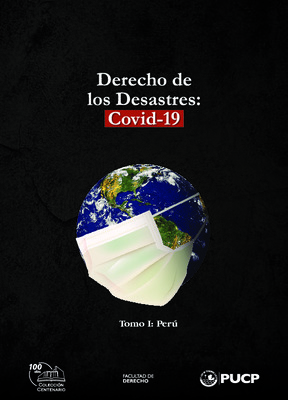| dc.contributor.advisor | Sotomayor Trelles, José Enrique | |
| dc.contributor.author | Rodríguez Yupanqui, Sofía Diana Isabel | |
| dc.date.accessioned | 2021-05-13T16:20:17Z | |
| dc.date.available | 2021-05-13T16:20:17Z | |
| dc.date.created | 2020 | |
| dc.date.issued | 2021-05-13 | |
| dc.identifier.uri | http://hdl.handle.net/20.500.12404/19083 | |
| dc.description.abstract | En el contexto peruano, existen numerosos casos sobre contaminación por metales pesados
en el territorio de pueblos indígenas. Esto ha ocasionado un deterioro de su hábitat, su
territorio, grave afectación a sus recursos naturales, su salud, en otros. A pesar de que estos
casos han llegado a judicializarse, no ha existido un reconocimiento del derecho a la salud
ambiental, desde un enfoque del pluralismo jurídico. El objetivo de este artículo es ser una
aproximación hacia un posible y necesario reconocimiento del derecho a la salud ambiental
con el fin de que se efectivice este derecho de los pueblos indígenas. Es evidente que este
derecho abarca otros factores, pero el presente artículo se ha centrado en analizar desde el
contexto de los pueblos indígenas. Para ello, se analiza los antecedentes de la protección del
derecho al medio ambiente en el marco nacional e internacional de los pueblos indígenas
tomando como referencia el trabajo de diversos autores sobre este tema desde una
perspectiva histórica. Posteriormente, se realiza un análisis del contenido esencial, y
desarrollo de la jurisprudencia sobre el derecho a la salud y el derecho al medio ambiente,
para finalmente desarrollar cuál sería el contenido esencial del derecho a la salud ambiental.
En el último capítulo, se expone el caso de la Comunidad Nativa Tres Islas a fin de
comprender las implicancias que hubiese tenido el reconocimiento de este derecho. El
análisis de este trabajo tiene como conclusión principal que, en nuestro contexto, es necesario
el reconocimiento de este derecho desde un enfoque del pluralismo jurídico; no obstante, es
necesario seguir debatiendo el tema. | es_ES |
| dc.description.abstract | On the peruvian context, the majority of indigenous people have a several problems, because
the contamination in their territory for extractivism industry. The consequences are
degradation of their habitat, their natural resources and their healthy. Despite the fact that
these cases have been brought to justice, there has been no recognition of the right to
environmental health, from a perspective of legal pluralism. The objective of this article is
to be an approach towards a possible and necessary recognition of the right to environmental
health in order to make this right of indigenous peoples effective. The environmental health
comprises other factors, but this article has focused on analyzing it from the perspective of
indigenous people. To do this, It is necessary to analyze the antecedents of the protection of
the environment right in the case of indigenous peoples in the national and international
framework, taking as a reference the work of various authors on this subject from a historical
perspective. Subsequently, the analysis of the essential content and development of the
jurisprudence on the health right and the environment right, to finally develop what would
be the essential content of the right to environmental health. The last chapter presents the
case of the Tres Islas Native Community in order to understand the implications that the
recognition of this right have had. The analysis of this work has as its main conclusion that,
in our context, it is necessary to recognize this right from a legal pluralism approach;
however, it is necessary to continue debating. | es_ES |
| dc.language.iso | spa | es_ES |
| dc.publisher | Pontificia Universidad Católica del Perú | |
| dc.rights | info:eu-repo/semantics/closedAccess | es_ES |
| dc.subject | Salud ambiental | es_ES |
| dc.subject | Derecho a la salud | es_ES |
| dc.subject | Derecho ambiental | es_ES |
| dc.subject | Comunidades nativas--Perú | es_ES |
| dc.subject | Pluralismo jurídico | es_ES |
| dc.subject | Contaminación | es_ES |
| dc.title | Afectación del derecho a la salud ambiental, al derecho a la salud y derecho al medio ambiente en los casos de contaminación por metales pesados en pueblos indígenas: un análisis a partir del caso de la Comunidad Nativa Tres Islas, en el periodo 2012 – 2020 | es_ES |
| dc.type | info:eu-repo/semantics/bachelorThesis | es_ES |
| thesis.degree.name | Segunda Especialidad en Derechos Fundamentales y Constitucionalismo en América Latina | es_ES |
| thesis.degree.level | Título Profesional | es_ES |
| thesis.degree.grantor | Pontificia Universidad Católica del Perú. Facultad de Derecho | es_ES |
| thesis.degree.discipline | Derechos Fundamentales y Constitucionalismo en América Latina | es_ES |
| dc.type.other | Trabajo académico de segunda especialidad | |
| dc.subject.ocde | https://purl.org/pe-repo/ocde/ford#5.05.01 | es_ES |
| dc.date.EmbargoEnd | 2022-03-02 | |
| dc.publisher.country | PE | es_ES |
| renati.advisor.dni | 45486817 | |
| renati.advisor.orcid | https://orcid.org/0000-0002-1155-0249 | es_ES |
| renati.author.dni | 70522723 | |
| renati.discipline | 421189 | es_ES |
| renati.level | https://purl.org/pe-repo/renati/level#tituloSegundaEspecialidad | es_ES |
| renati.type | https://purl.org/pe-repo/renati/type#trabajoAcademico | es_ES |



